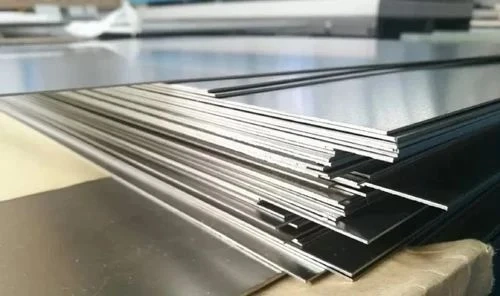High tensile steel plates are known for their excellent properties, making them the ultimate structural strength solution. The unique strength and toughness make these plates ideal for various demanding applications, including heavy machinery, construction, and transportation. This informative article will explore the characteristics, advantages, and uses of high tensile steel plates in industry.
Properties of High Tensile Steel Plates
High tensile steel plates are made from high strength and low-weight steel. This type of steel is produced by adding alloying elements to standard carbon steel to increase its strength. These alloying elements may include nickel, chromium, manganese, and vanadium. The resulting steel has a high yield strength, which means it can withstand high stress levels before it starts to deform. The toughness of high tensile steel plates is also a significant benefit. This property ensures the material can handle various impacts and shocks without cracking or breaking.
Advantages of High Tensile Steel Plates
The advantages of high tensile plates are numerous and diverse. Some of the key benefits include:
High Strength-to-Weight Ratio: High tensile steel plates have a high strength-to-weight ratio, making them ideal for heavy machinery and equipment use. This property allows designers to reduce the overall weight of structures, resulting in cost savings on materials and transportation.
Good Weldability: High tensile steel plates have excellent weldability, making them easy to join and fabricate. This property makes creating customized structures that meet specific design requirements easy.
Corrosion Resistance: High tensile steel plates are corrosion-resistant, making them suitable for harsh environments. This property ensures the material can withstand moisture, salt, and chemical exposure.
Extended Durability: High tensile steel plates are durable and long-lasting, making them a cost-effective solution for various applications. The material has excellent fatigue resistance, ensuring it can handle repeated loading cycles without developing cracks or fractures.
Uses of High Tensile Steel Plates
High tensile plates have numerous applications across a broad range of industries. The material is ideal for structures requiring high strength, toughness, and durability. Some of the most common uses of high tensile plates include:
Construction: High tensile steel plates are used to construct buildings, bridges, and other infrastructure projects. The material is ideal for use in high-rise buildings, where it can provide the required lateral support and stiffness. The material is also suitable for use in bridge construction, where it can withstand the effects of heavy traffic and environmental factors.
Heavy Machinery: High tensile steel plates are used to construct heavy machinery, including mining equipment, cranes, and excavators. The material is essential for these applications because it can withstand the significant stresses and strains these machines generate.
Transportation: High tensile plates are used in the transportation industry, including manufacturing railways, ships, and aircraft. The material is ideal for these applications because it can withstand the high stress levels that can develop during movement.
Conclusion:
In conclusion, high tensile steel plates are the ultimate solution for structural strength. The unique strength, toughness, and durability make these plates ideal for various applications, including heavy machinery, construction, and transportation. The advantages of high tensile plates are numerous and diverse, including their high-strength-to-weight ratio, good weldability, corrosion resistance, and extended durability. With their impressive properties and wide range of applications, high tensile steel plates are vital for modern advancement.



